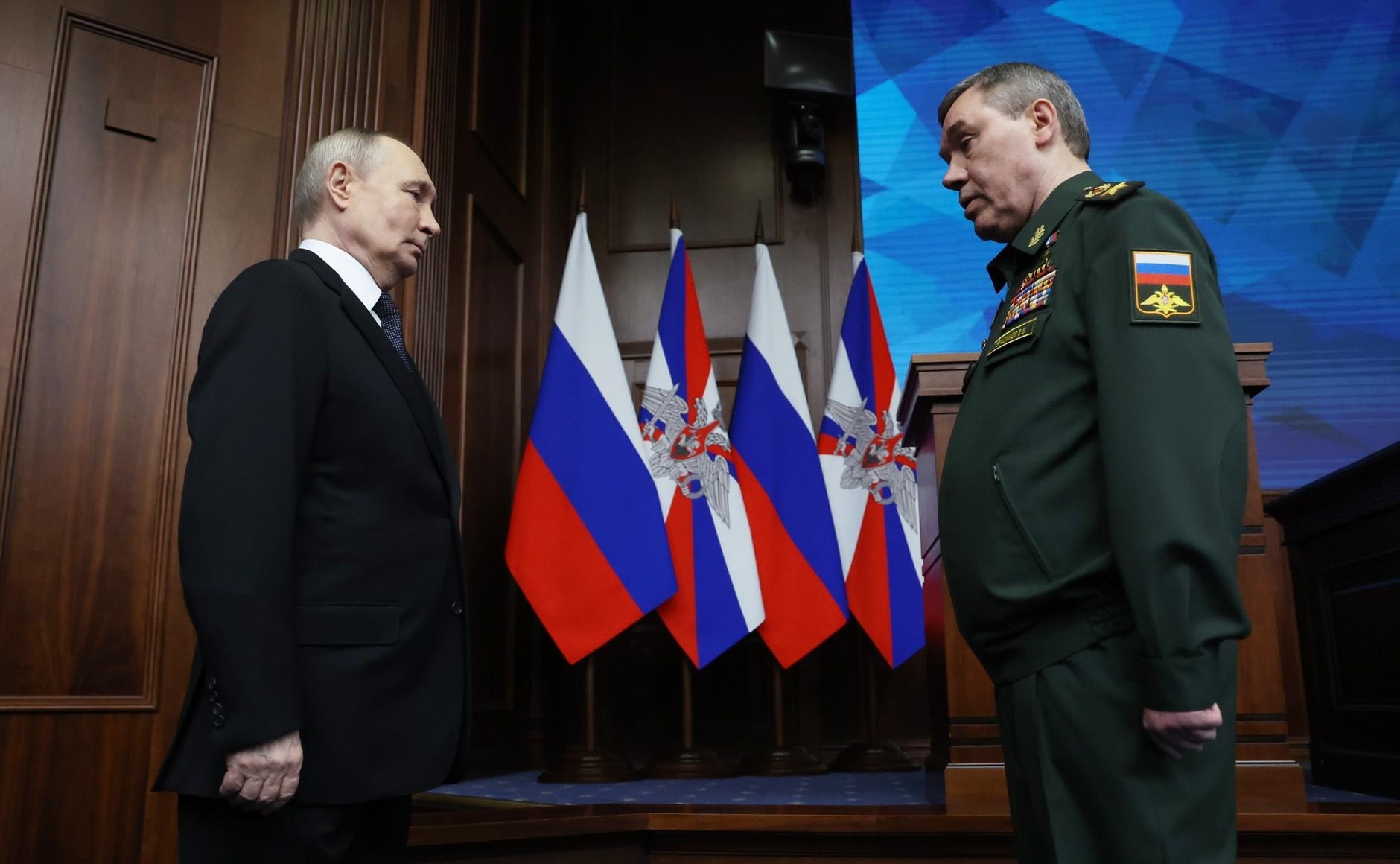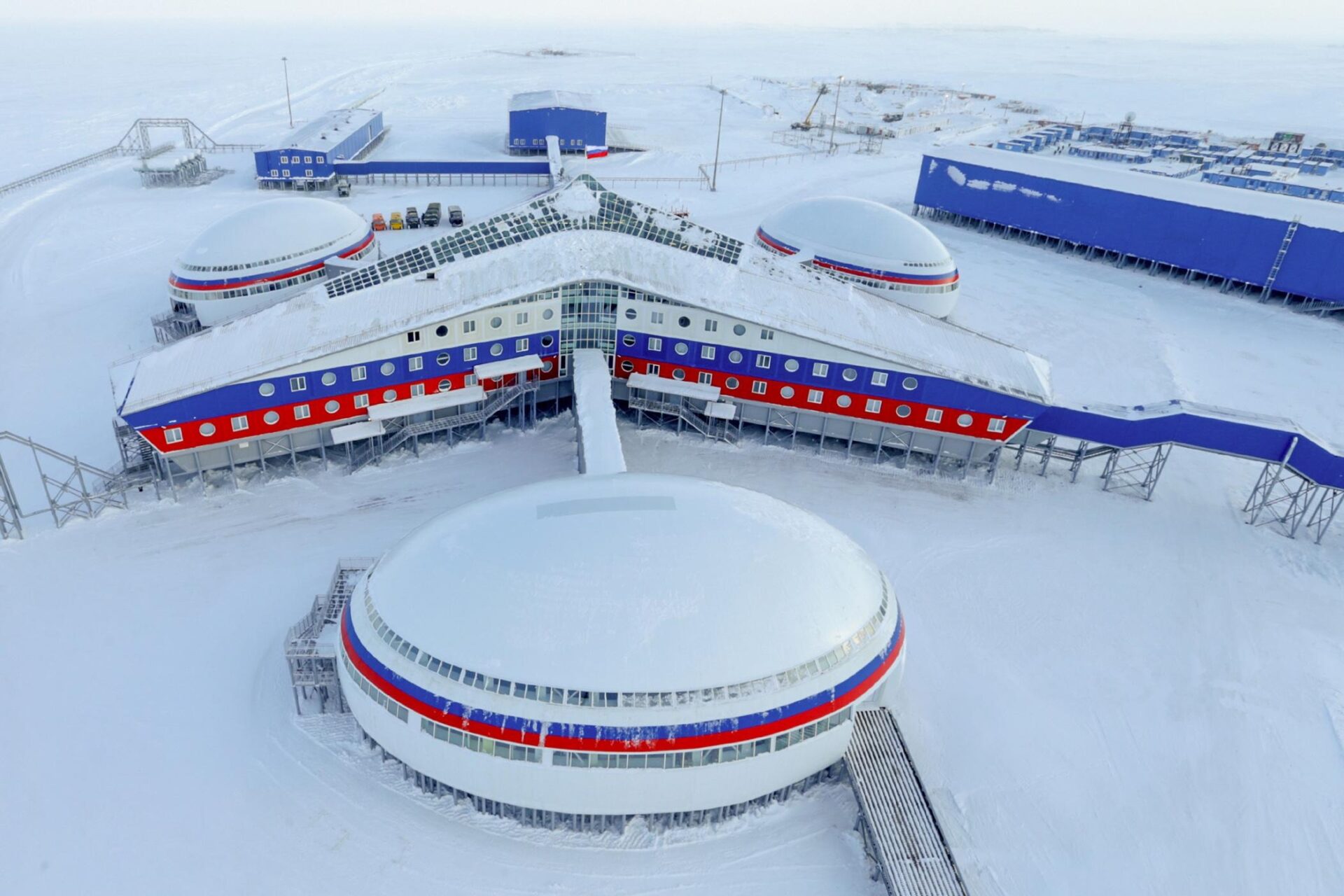
Nuclear Means Come to Front of Putin’s Long-War Strategy
Nuclear Means Come to Front of Putin’s Long-War Strategy
Executive Summary:
- Russian President Vladimir Putin escalated his nuclear brinkmanship, announcing tests of new weapons, such as the Burevestnik and Poseidon weapon systems.
- After these tests, U.S. President Donald Trump unexpectedly responded by ordering the United States to prepare for resumed nuclear testing “on an equal basis” with Russia and the People’s Republic of China (PRC).
- Much of Putin’s nuclear posturing is aimed at eroding European solidarity with Ukraine by intensifying anti-nuclear sentiments on the continent. The strategy may backfire, however, by way of angering the United States and the PRC.
Last week was supposed to mark a significant step forward in Russia’s application of nuclear policy, which constitutes its key geopolitical asset in the 21st century. Instead, Moscow commentators were taken aback over U.S. President Donald Trump’s message on resuming nuclear testing “immediately” and also “on an equal basis” with Russia and the People’s Republic of China (PRC) (RBC, October 30). Russia’s most knowledgeable experts have not been able to discern whether the U.S. Department of Defense was ordered to execute a series of tests of nuclear devices at the Nevada test site or to expand testing of delivery systems for nuclear warheads (RIAC, October 31). It was clear that a sequence of statements by Russian President Vladimir Putin on testing new and, in his assessment, technologically unique nuclear-capable weapon systems prompted Trump to issue the ambiguous order (Meduza, October 30). It was also clear that Putin sought to solicit a very different response.
The first move in Putin’s brinksmanship was the October 26 announcement of a successful test of the nuclear-propelled Burevestnik cruise missile, which he had advertised as ready for deployment back in March 2018 in his address to the Federal Assembly (Interfax, October 27). Putin intended to draw Trump’s attention and return to planning for the summit in Budapest, which had been canceled due to Russia’s rejection of a ceasefire in the memorandum delivered to U.S. Secretary of State Marco Rubio by the Russian Ministry of Foreign Affairs (News.ru, October 31). Putin sought to demonstrate that Russia and the United States had more important matters to discuss than merely a pause in fighting in Donbas, such as his offer to observe the limits established by the New START Treaty, which is due to expire in February 2026 (RBC, October 10). Trump appeared to shrug off the signal about Russia’s new missile, suggesting that Putin focus on the Ukrainian armistice rather than playing nuclear games (Vedomosti, October 27).
Putin proceeded to announce the successful test of the nuclear-propelled Poseidon underwater drone, which was also first advertised in 2018 (Verstka, October 31). Neither weapon system adheres to the definitions of strategic arms in the New START, and, apart from Putin’s hyped descriptions, very little is known about their characteristics. Even the October 21 and October 28 tests cannot be independently confirmed (Business Online, October 29; Izvestiya, November 2). The new heavy intercontinental ballistic missile Sarmat (RS-28), which Putin also declared ready for deployment, failed a test in September 2024 and has not been launched since (RBC, October 31). Precise details appear to be of little interest to Putin, who primarily aims to restart the conversation with Trump and does not appear to expect his counterpart to be interested in technicalities (Current Time, November 1). Trump’s response came as a surprise to Putin, and some Russian experts have attempted to explain it as an angry reaction to the perceived challenge to his plan for building the Golden Dome missile defense system (Izvestiya, October 30).
The Kremlin found it necessary to clarify that the Burevestnik and Poseidon tests did not violate the provisions of the Comprehensive Test Ban Treaty (CTBT), which Russia ratified in 1996, but then withdrew from in 2023 (Kommersant, October 31). This clarification was an indirect response to the dry message from Beijing, which expressed hope that commitments in the CTBT would be respected (Kommersant, October 30). Russian Prime Minister Mikhail Mishustin was also dispatched to Beijing for further clarifications, and the Kremlin expressed hope that he would be received by PRC President Xi Jinping (RIA Novosti, October 31).
After the October 30 meeting between Trump and Xi, Moscow pundits have argued that the United States and PRC have only achieved a temporary truce in the trade war (Nezavisimaya gazeta, October 30; Forbes.ru, November 1). The attempts to alleviate tensions in U.S.–PRC relations, however, make a sharp contrast with Putin’s escalation of nuclear posturing. Russia has found itself on the margins of dynamic geoeconomic interactions in East and Southeast Asia, which featured prominently at the Asia-Pacific Economic Cooperation forum in Seoul last week. The brandishing of nuclear instruments has not granted Russia its desired key role in this region (Rossiiskaya gazeta, October 29). Russia’s oil exports have become toxic for many Asian customers, including India, and attempts to regain a position in the defense export market by making clandestine deals with Vietnam are disagreeable to the PRC (Lenta.ru, October 28).
The Kremlin has good reason to worry about the Trump–Xi discussion on ending Russia’s war against Ukraine. Even symbolic support from Beijing for the proposition of a ceasefire may amount to a heavy blow to Putin’s war efforts (The Moscow Times, October 30). Nevertheless, Putin’s nuclear brinksmanship is aimed primarily at eroding the European solidarity with Ukraine (RIAC, October 27). Anti-nuclear sentiments are a significant political factor in many European states—particularly in Germany—and testing nuclear-propelled weapon systems can intensify these concerns, especially as the prospect of resuming nuclear testing begins to loom large (Re: Russia, October 28; Kommersant, October 30). France and the United Kingdom, two European nuclear powers, have faced different pressures as the need to increase investments in modernizing their nuclear capabilities undermines their ambitions to lead the so-called “coalition of the willing” in providing military support to Ukraine (Vzglyad, October 27).
As the war pulls Russia’s economy down from stagnation to recession, Putin’s propensity to bring nuclear weapons into the political fray prevails over caution and risk calculus. Putin’s desire to cultivate personal connections with Trump had curbed this tendency for nearly three-quarters of this year, but the cancellation of the Budapest summit and the U.S. decision to impose new sanctions on Russia have triggered a new surge in nuclear brinksmanship. Past experiences should have informed Putin that the results are often counterproductive, but like every overstaying autocrat, he has lost the ability to recognize his own mistakes.

